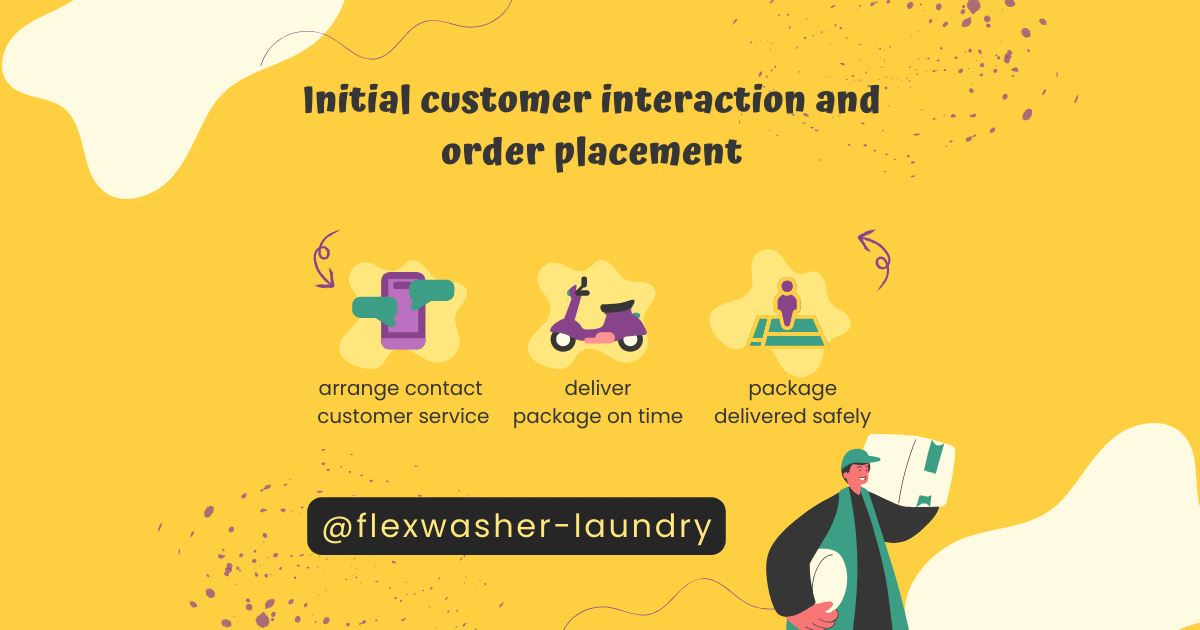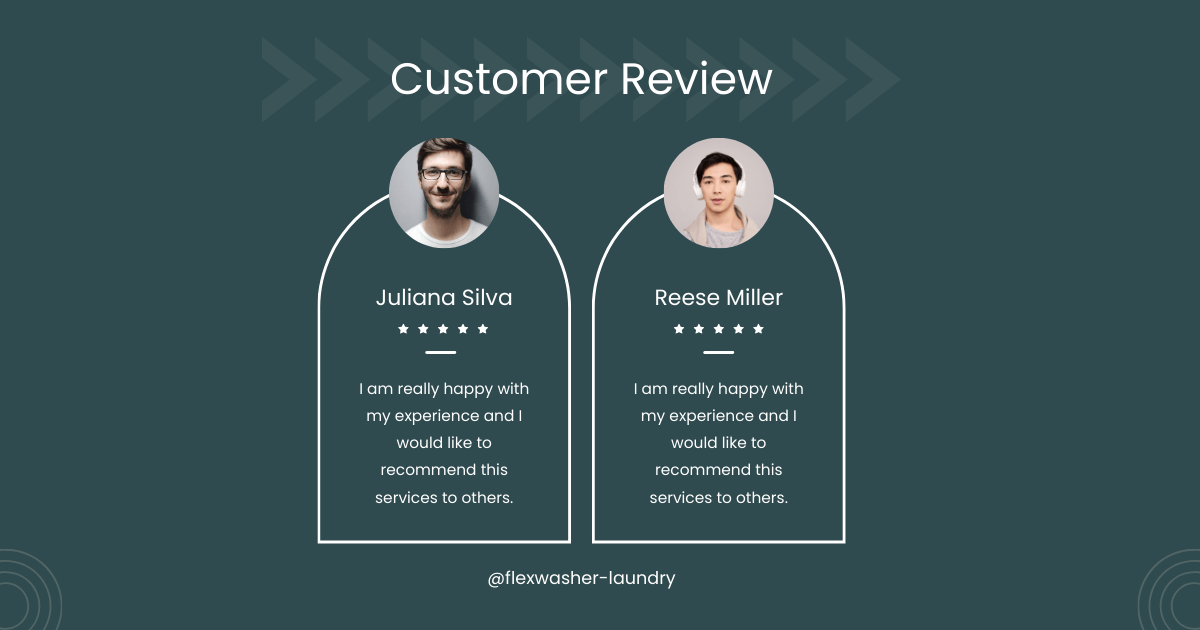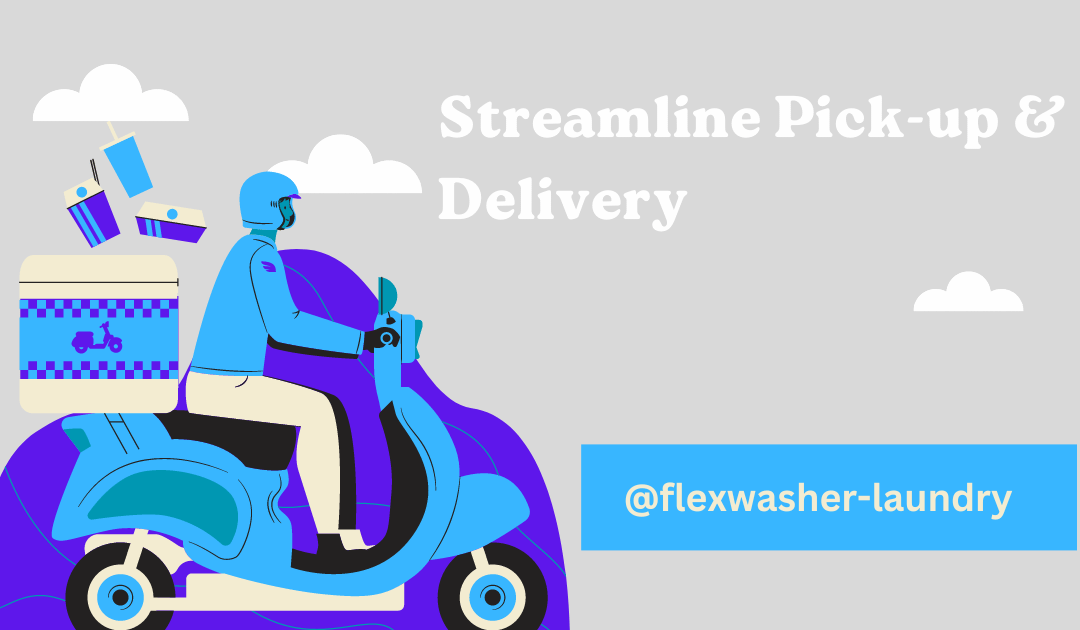Welcome to the future of laundry services! In today’s fast-paced world, convenience is king. Streamlining your laundry service’s pick-up and delivery can significantly enhance customer satisfaction and drive business growth.
This article explores how you can transform your laundry operations to be more efficient and customer-friendly.
The Convenience Revolution in Laundry Services
Many customers face challenges with traditional laundry services, such as inconvenient drop-off and pick-up times or long waiting periods.
Streamlined pick-up and delivery services address these pain points by offering flexibility and saving valuable time, making them essential in any competitive laundry business strategy.
Implementing Efficient Pick-Up and Delivery Systems
To adopt a streamlined system, start by evaluating your current logistics and identifying potential bottlenecks. Technology solutions like mobile apps and online scheduling can greatly enhance operational efficiency, allowing customers to book and track their laundry with just a few clicks.
Marketing Your Streamlined Services
Once your system is in place, it’s crucial to communicate the benefits to your customers. Use both traditional and digital marketing strategies to reach a broader audience.
Consider partnerships with local businesses, targeted promotions, and loyalty programs to attract and retain customers.
1. The Convenience Revolution in Laundry Services
In the bustling urban environments of today’s major cities, managing time effectively is more crucial than ever. Traditional laundry services often don’t align well with the hectic schedules of modern consumers.
Common frustrations include rigid operating hours, the inconvenience of having to travel to drop off and pick up laundry, and the lengthy turnaround times that can disrupt an entire week’s schedule.
Streamlined pick-up and delivery services bring the solution directly to your doorstep. These services are designed to fit seamlessly into your lifestyle, offering flexible scheduling through easy-to-use online platforms or apps.
Customers can arrange for their laundry to be picked up and delivered at times that suit them best, whether early in the morning, during a mid-day break, or late in the evening.
The benefits of this modern approach are manifold. Not only does it save precious time, but it also reduces the hassle of dealing with traffic, saves fuel, and ultimately, minimizes the stress associated with managing household chores in a tight schedule.
With streamlined services, laundry becomes one less thing to worry about, freeing up time for work, leisure, or spending time with family and friends.
As a laundry business, adopting these innovative services means you can provide greater value to your customers, enhancing their overall satisfaction and loyalty.
This initial touchpoint is crucial for drawing in potential clients who are seeking a more efficient and customer-centric approach to laundry services. Know more Pick-Up and Drop-Off Services Matter for Laundry and Dry Cleaning.
Key Components of a Successful Laundromat
While offering a variety of services is essential, the success of a laundromat hinges on several critical components:
- Location: A strategic location, preferably in high-footfall areas or near residential complexes, can significantly boost customer inflow.
- Equipment: Investing in high-quality, energy-efficient machines not only ensures longevity but also enhances customer satisfaction with better cleaning results.
- Pricing: Competitive pricing, coupled with occasional promotions or loyalty programs, can attract and retain customers.
- Customer Service: A dedicated and friendly staff, quick problem resolution, and a keen ear to customer feedback can elevate the overall brand experience, turning one-time visitors into loyal patrons.
In the ever-evolving landscape of the Laundry and Dry Cleaning industry, understanding these basics is the first step. But to truly thrive, one must delve deeper into the realm of consumer insights, which we’ll explore in the subsequent sections.

Download Free
Google Ads PPC Strategies Tailored for Laundry Industry
Whether you are starting to research Google Ads (Pay-per-Click) or are ready to set up your first campaign, use these workable and proven strategies to get started. Scale up your lead generation efforts and achieve unparalleled results. Reach Idea Customers, Convert Clicks into Customers – Let's Optimize Google Ads Campaign Today!
2. Understanding the Current Process
Before diving into the innovative ways to streamline our operations, it’s essential to grasp the current landscape of the laundry and dry cleaning industry. This understanding lays the foundation for meaningful improvements.
Initial customer interaction and order placement
Traditionally, customers would either walk into a laundry shop or place a call to request a pick-up. With the advent of app-based services, this interaction has shifted online. Customers now:
- Download the app and create an account.
- Browse through the services offered, such as dry cleaning, washing, ironing, etc.
- Select their preferred service, specify the number of items, and place an order.
- Receive a confirmation notification, often with an estimated cost and pick-up time.
Scheduling pick-ups and deliveries
Once an order is placed, the real logistical challenge begins. Efficient scheduling is the backbone of a successful laundry service. Typically:
- Customers choose a convenient pick-up time based on available slots.
- The system then assigns a driver to collect the laundry items.
- After cleaning, customers are notified of the expected delivery time, allowing them to plan accordingly.
- Some apps offer real-time tracking, enabling customers to monitor their laundry’s journey.
Challenges faced in traditional systems
While the app-based model offers convenience, it’s not without its challenges. Traditional systems often grapple with:
- Inefficient routing: Drivers might take longer routes, leading to delays and increased fuel costs.
- Lack of real-time communication: Without instant updates, customers remain in the dark about any delays or changes.
- Manual scheduling: This can lead to overbookings or missed pick-ups, tarnishing the brand’s reputation.
- Difficulty in handling bulk orders or special requests, leading to operational hiccups.
Recognizing these challenges is the first step towards creating a more streamlined and efficient system.
3. Key Components of an Efficient System
Building an efficient system isn’t just about addressing challenges; it’s about anticipating them. By integrating key components into our service, we can offer an unparalleled experience to our customers while ensuring smooth operations behind the scenes.
User-friendly app interface
The first interaction a customer has with your service is through the app. A user-friendly interface is paramount for several reasons:
- Intuitive Design: Customers should be able to navigate the app effortlessly, finding services and placing orders with ease.
- Clear Information: Details about services, pricing, and turnaround times should be transparent and easily accessible.
- Quick Response: The app should be optimized for speed, ensuring that customers don’t experience lags or crashes.
- Personalized Experience: Features like order history, favorite services, and personalized recommendations can make users feel valued.
Remember, a satisfied customer is more likely to return and recommend your service to others.
Real-time tracking capabilities
Today’s customers expect to be in the loop. Real-time tracking offers them a sense of control and assurance:
- Transparency: Customers can see where their laundry is at any given moment, reducing anxiety and building trust.
- Estimations: By tracking the progress, customers can get accurate delivery time estimates.
- Accountability: Real-time tracking holds both drivers and the service accountable, ensuring timely pick-ups and deliveries.
Such features not only enhance the customer experience but also reduce the number of inquiry calls and complaints, freeing up resources.
Automated scheduling and reminders
Automation is the future. By automating scheduling and reminders, we can achieve:
- Efficiency: The system can optimize pick-up and delivery routes, ensuring minimal delays.
- Consistency: Automated reminders ensure that customers are always informed about upcoming pick-ups or deliveries, reducing the chances of missed appointments.
- Flexibility: In case of changes or delays, the system can automatically reschedule and notify the customer, ensuring smooth operations.
By integrating these components, we lay the foundation for a system that’s not only efficient but also customer-centric.
4. Streamlining Pick-Up Operations
Streamlining pick-up operations is the cornerstone of an efficient laundry service. It’s not just about speed, but also about accuracy, reliability, and customer satisfaction. Let’s delve into the strategies that can transform this crucial aspect of the business.
Centralized pick-up points
Centralized pick-up points are a game-changer for several reasons:
- Convenience for Customers: Instead of waiting for a specific time slot, customers can drop off their laundry at a centralized point at their convenience.
- Reduced Operational Costs: Drivers can pick up multiple orders from a single location, reducing fuel and labor costs.
- Speed: With bulk pick-ups, the turnaround time for processing orders can be significantly reduced.
Locations like malls, office complexes, or residential community centers can serve as ideal centralized pick-up points.
Efficient route planning for drivers
Efficient route planning is the backbone of timely pick-ups:
- Optimized Routes: Drivers can avoid traffic and take the shortest routes, ensuring punctuality.
- Reduced Fuel Costs: Shorter routes mean less fuel consumption, leading to cost savings.
- Increased Productivity: Drivers can handle more pick-ups in a day, increasing the overall throughput of the business.
Modern GPS systems and route planning software can assist drivers in finding the best routes in real-time.
Use of technology for seamless pick-up coordination
Technology plays a pivotal role in coordinating pick-ups:
- Real-time Updates: Drivers can get instant notifications about new pick-ups, cancellations, or changes.
- Customer Communication: Automated messages can inform customers about the estimated pick-up time or any unforeseen delays.
- Feedback Loop: After every pick-up, drivers can update the system, ensuring that the backend operations are aligned.
By leveraging technology, businesses can ensure that the pick-up process is not only efficient but also error-free.
5. Enhancing the Delivery Process
While pick-up is half the equation, delivery completes the customer experience. An efficient, timely, and safe delivery process can significantly elevate a brand’s reputation and customer loyalty. Let’s explore the strategies to enhance this crucial phase.
Predictive delivery windows
Predictive delivery windows are about setting and managing customer expectations:
- Accuracy: Instead of vague timelines, provide customers with precise delivery windows based on real-time data.
- Flexibility: Allow customers to choose or modify their delivery windows based on their availability.
- Transparency: Keep customers informed about the progress, so there are no surprises.
Such an approach reduces the chances of missed deliveries and enhances customer satisfaction.
Contactless delivery options
In today’s world, safety is paramount. Contactless delivery addresses this concern:
- Safety First: Minimize human contact to ensure the well-being of both the customer and the delivery personnel.
- Convenience: Customers can specify a safe spot for their deliveries, ensuring they receive their orders even if they’re not home.
- Trust: Such measures build trust, showing customers that the brand cares about their safety.
With the right technology and training, contactless delivery can be seamlessly integrated into the delivery process.
Feedback and rating system for continuous improvement
Feedback is the compass that guides improvement:
- Customer Voice: Understand what customers liked and where they felt the service could improve.
- Accountability: Ratings can help identify and reward top-performing delivery personnel and train those who need improvement.
- Continuous Improvement: Regular feedback provides actionable insights, helping businesses evolve and adapt to changing customer needs.
By actively seeking and acting on feedback, businesses can ensure they’re always a step ahead in delivering exceptional service.
6. Customer Support Excellence
While efficient operations are the backbone of a successful laundry service, exceptional customer support is its heart. It’s the bridge between the business and its customers, ensuring that every interaction is positive, even when things don’t go as planned. Let’s delve into the pillars of customer support excellence.
Proactive communication with customers
Communication is not just about addressing issues; it’s about preventing them:
- Anticipation: Foresee potential challenges and inform customers in advance. For instance, if there’s a delay due to unforeseen circumstances, a quick heads-up can make all the difference.
- Updates: Keep customers in the loop about their order status, from pick-up to delivery.
- Engagement: Regularly engage with customers through newsletters, offers, and updates, making them feel valued and connected to the brand.
Proactive communication builds trust and shows customers that the business values transparency and honesty.
Handling and resolving complaints efficiently
Every business faces challenges, but it’s the response that defines its reputation:
- Swift Response: Address complaints promptly. The quicker a concern is addressed, the better the chances of retaining the customer’s trust.
- Empathy: Listen to the customer’s concerns, validate their feelings, and assure them that their issue will be resolved.
- Resolution: Take actionable steps to solve the problem and ensure it doesn’t recur in the future.
Handling complaints efficiently not only resolves the immediate issue but also turns a dissatisfied customer into a loyal advocate.
Training and development for customer support representatives
Customer support representatives are the face of the business. Their training and development are crucial:
- Product Knowledge: Ensure they understand the ins and outs of the services offered, enabling them to answer queries confidently.
- Soft Skills: Equip them with communication and empathy skills, ensuring every customer interaction is positive.
- Continuous Learning: Regular workshops and training sessions can help them stay updated with the latest industry trends and best practices.
Investing in the training and development of customer support representatives ensures that every customer interaction reinforces the brand’s commitment to excellence.

7. Feedback and Improvement Loop
In the dynamic world of app-based laundry services, staying stagnant is not an option. Continuous improvement is the key to staying ahead of the competition and meeting ever-evolving customer expectations. Central to this is the feedback and improvement loop. Let’s explore its significance and how to leverage it effectively.
Importance of customer feedback
Feedback is the voice of the customer, and here’s why it’s invaluable:
- Direct Insight: Customers provide a firsthand account of their experiences, highlighting what’s working and what’s not.
- Building Trust: Actively seeking feedback shows customers that their opinions matter, fostering trust and loyalty.
- Driving Innovation: Feedback can spark new ideas, leading to innovative services or features that set the business apart.
Every piece of feedback, whether positive or negative, is an opportunity to learn and grow.
Analyzing feedback for actionable insights
Feedback in itself is valuable, but its true power lies in its analysis:
- Identify Patterns: Look for recurring themes or issues that multiple customers highlight.
- Quantitative Analysis: Use metrics and scores (like Net Promoter Score) to gauge overall customer satisfaction.
- Segmentation: Break down feedback based on demographics or service types to uncover specific insights.
With a structured analysis, feedback can be transformed into actionable insights that drive strategic decisions.
Implementing changes and measuring results
Feedback-driven changes can propel a business forward, but it’s essential to measure their impact:
- Test and Learn: Before rolling out major changes, test them on a smaller scale to gauge their effectiveness.
- Monitor Metrics: Track key performance indicators to measure the impact of the changes implemented.
- Iterate: Based on results, refine and optimize the changes for maximum effectiveness.
By closing the loop – from feedback to implementation to measurement – businesses can ensure they’re always moving in the right direction.
8. Introducing the Subscription Model
As the laundry and dry cleaning industry evolves, businesses must explore innovative revenue models. One such model that has gained traction across various industries is the subscription model. Let’s delve into its potential benefits for the app-based laundry service sector and how it can be effectively implemented.
Benefits of a subscription-based approach
Shifting to a subscription-based approach can revolutionize the way businesses operate and interact with customers:
- Steady Revenue Stream: Subscriptions ensure a consistent inflow of revenue, aiding in financial planning and stability.
- Customer Loyalty: Subscribers are more likely to stick with a service, reducing customer churn and increasing lifetime value.
- Operational Efficiency: Predictable demand allows for better resource allocation and inventory management.
- Enhanced Customer Experience: Subscribers often enjoy perks like priority service, leading to higher satisfaction.
Embracing a subscription model can be a strategic move, positioning the business for long-term success.
Types of subscription models and their advantages
Not all subscription models are created equal. Depending on the target audience and business objectives, there are several models to consider:
- Flat-rate Subscription: Customers pay a fixed monthly fee for unlimited services. This model offers simplicity and is easy for customers to understand.
- Tiered Subscription: Offers multiple subscription levels, each with its own set of benefits. This caters to a diverse customer base with varying needs and budgets.
- Usage-based Subscription: Customers are billed based on their usage, ensuring they only pay for what they use.
- Hybrid Models: Combine elements of the above models to offer a tailored subscription experience.
Choosing the right model requires a deep understanding of the customer base and a clear vision of the business’s goals.
Retaining customers through subscription incentives
While acquiring subscribers is essential, retaining them is equally crucial. Here’s how incentives can play a role:
- Loyalty Rewards: Offer points or rewards for long-term subscribers, which can be redeemed for additional services or discounts.
- Exclusive Offers: Provide subscribers with exclusive deals or early access to new services.
- Referral Bonuses: Encourage subscribers to refer friends and family, rewarding them for each successful referral.
- Personalized Experiences: Use data analytics to offer tailored services or recommendations, making each subscriber feel valued.
By continuously adding value for subscribers, businesses can ensure a loyal and growing subscriber base.
9. Leveraging Technology for Operational Efficiency
In the digital age, technology is not just an add-on but a necessity for businesses aiming for operational excellence. For app-based laundry and dry cleaning services, leveraging cutting-edge technology can be the difference between being a market leader and just another player. Let’s explore how technology can drive efficiency and innovation.
Integrating AI and machine learning for route optimization
Transportation and logistics play a pivotal role in the laundry service industry. Here’s how AI and machine learning can transform this domain:
- Dynamic Route Planning: AI algorithms can analyze real-time traffic data to suggest the fastest routes for drivers, reducing delays and fuel costs.
- Pattern Recognition: Over time, machine learning can identify patterns in traffic or order volumes, allowing for proactive route adjustments.
- Driver Performance: AI can monitor driver behavior, ensuring adherence to safety standards and efficient driving practices.
By optimizing routes, businesses can ensure timely pick-ups and drop-off services, enhancing customer satisfaction.
Use of IoT for real-time equipment monitoring
Equipment downtime can be a significant bottleneck. With the Internet of Things (IoT), businesses can stay a step ahead:
- Real-time Monitoring: Sensors on equipment can send real-time data, allowing for immediate detection of any malfunctions or inefficiencies.
- Preventive Maintenance: By analyzing equipment data, businesses can predict when maintenance is due, preventing unexpected breakdowns.
- Energy Efficiency: IoT can monitor energy consumption, suggesting optimizations to reduce costs and environmental impact.
IoT ensures that the backbone of the laundry process, the equipment, runs smoothly and efficiently.
Data analytics for business insights and decision-making
Data is the new gold, and for a good reason:
- Customer Insights: Analyze order patterns, feedback, and app usage to understand customer preferences and behaviors.
- Operational Efficiency: Monitor key performance indicators to identify areas of improvement in the operational process.
- Financial Planning: Analyze revenue streams, costs, and growth patterns to make informed financial decisions.
- Market Trends: Stay updated with industry trends and customer demands, ensuring the business remains relevant and competitive.
By harnessing the power of data analytics, businesses can make informed decisions, driving growth and operational excellence.
10. Case Study: Successful Implementation of Streamlined Processes
While theoretical knowledge provides a foundation, real-world examples offer tangible evidence of success. Let’s delve into a case study of a laundry business that successfully implemented streamlined processes, reaping significant benefits.
Background of the business
LaundryLux is a mid-sized, app-based laundry service operating in the bustling city of Metropolis. Established in 2015, the business quickly gained traction due to its promise of quick turnarounds and quality service. With a fleet of 20 vehicles and a central processing unit, LaundryLux catered to a diverse clientele, from busy professionals to large families.
Challenges faced and solutions implemented
As the business grew, so did the challenges:
- Operational Bottlenecks: With increasing order volumes, the pick-up and delivery process became chaotic. To address this, LaundryLux introduced centralized pick-up points and leveraged AI for route optimization.
- Equipment Downtime: Frequent equipment breakdowns led to delayed orders. Implementing IoT sensors allowed for real-time monitoring and preventive maintenance, drastically reducing downtime.
- Customer Complaints: As the volume of orders grew, so did the complaints regarding missed deliveries and service quality. By introducing a feedback loop and data analytics, LaundryLux could pinpoint issues and address them proactively.
These solutions, though challenging to implement, were pivotal in transforming the business operations.
Results and key takeaways
Post-implementation, the results were nothing short of remarkable:
- Operational Efficiency: Order processing time reduced by 30%, and delivery punctuality improved by 40%.
- Customer Satisfaction: With improved service and proactive communication, customer satisfaction scores soared, leading to a 25% increase in repeat business.
- Financial Growth: Streamlined operations led to cost savings, and the enhanced customer experience drove revenue growth, with a 20% increase in quarterly profits.
The key takeaway from LaundryLux’s journey is clear: Embracing technology and continuously seeking improvement can propel a business to new heights, even in traditional industries like laundry and dry cleaning.
11. Conclusion
The laundry and dry cleaning industry, once seen as a traditional domain, is undergoing a transformative shift, thanks to technological advancements and changing consumer behaviors. As we’ve explored throughout this article, the potential for growth and innovation is immense.
The future of app-based laundry and dry cleaning services
With the rise of digitalization, the future of app-based laundry services looks promising:
- Personalized Experiences: Leveraging data analytics, businesses can offer tailored services, from scent preferences to fabric care, enhancing customer satisfaction.
- Green Initiatives: As environmental concerns take center stage, eco-friendly dry cleaning services and sustainable practices will become the norm.
- Integration with Smart Homes: Imagine a future where your smart washing machine communicates directly with your laundry service, scheduling pick-ups and deliveries seamlessly.
The possibilities are endless, and those who innovate will lead the pack.
Embracing change and continuous improvement
Change is the only constant. For businesses in this sector, embracing change is not just about survival but about thriving.
Continuous improvement, driven by feedback and technology, will be the cornerstone of success. Whether it’s optimizing routes, enhancing customer support, or introducing new revenue models, the goal remains the same: delivering exceptional value to customers.
The journey of app-based laundry and dry cleaning services is just beginning. With a customer-centric approach, technological integration, and a commitment to excellence, the future is bright for those ready to ride the wave of change.
Promote Your Laundry Business Online with Proven Online Marketing Strategies!
Unlock the Secrets of Google Ranking Optimization Strategies , Fast-Track Your Laundry Business Success with Mastermind Mr. Ram
Related Articles
Which AI Tools Are Used by Top SEO Agencies in the AI Transformation Era?
AI isn’t just disrupting SEO — it’s rebuilding it from the ground up. The world’s top SEO agencies are no longer relying on manual spreadsheets or...
Hire LLM Optimized SEO Service & Rank Faster | Get Yours
Every single day you postpone, your competitors are capturing market share in a new arena: AI Answer Engines. The digital landscape has fundamentally...
LLM Retrievable Content Creation Services: Future-Proof Your SEO with AI Agent-Ready Content
As search evolves beyond simple keyword matching, traditional SEO strategies are becoming obsolete. LLM retrievable content creation services are...
AI Powered SEO Services: Transform Your Digital Visibility and Rank Smarter
In today's fast-paced digital landscape, businesses struggle with traditional SEO methods that often fall short in efficiency and...
AI Powered Marketing for Laundry, Dry cleaners Services Business with Smart AI Automation
Why Read This? AI Marketing Is Changing Laundry Businesses Are you a laundry or dry cleaning business owner looking to grow faster in today’s AI era?...
AI-Driven SEO Services: A Game Changer for Laundry & Dry Cleaning Businesses
AI-Driven SEO Services: How Laundry & Dry Cleaning Businesses Win Online Imagine a customer urgently needing their clothes cleaned. They pull out...

